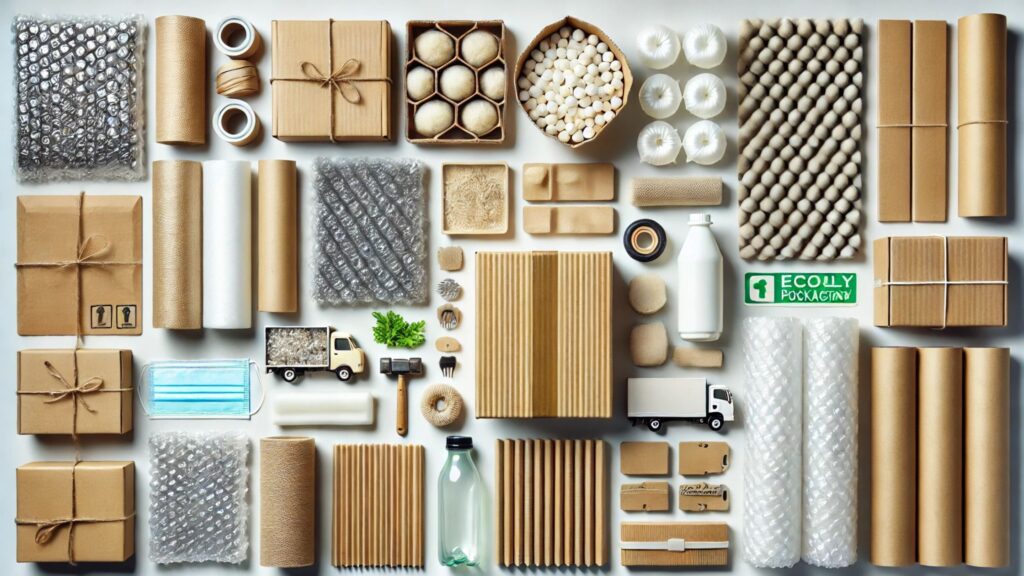In today’s fast-paced world of e-commerce, logistics, and manufacturing, protective packaging materials play a crucial role in safeguarding products from damage during storage and transportation. Whether shipping fragile electronics, perishable food items, or industrial equipment, choosing the right packaging material is essential for reducing breakage, minimizing costs, and ensuring customer satisfaction.
Types of Protective Packaging Materials
There is a wide variety of protective packaging materials available, each suited to different applications. Below are some of the most common types:
1. Bubble Wrap
Bubble wrap is one of the most widely used protective packaging materials. It provides cushioning through air-filled bubbles, effectively preventing impact damage. It is ideal for delicate items such as glassware, electronics, and artwork.
2. Foam Packaging
Foam packaging, including polyethylene, polyurethane, and polystyrene foam, is excellent for absorbing shocks and vibrations. It is commonly used for packing electronics, medical devices, and automotive parts.
3. Corrugated Cardboard
Corrugated cardboard is a sustainable and cost-effective option that provides structural strength while offering impact protection. It is widely used for shipping boxes and cartons.
4. Air Pillows and Inflatable Packaging
Air pillows are lightweight and take up minimal space before inflation. They are ideal for filling voids in packages, preventing items from shifting during transit.
5. Paper-Based Packaging
Kraft paper, molded pulp, and shredded paper provide eco-friendly cushioning solutions. These materials are biodegradable and recyclable, making them a sustainable choice for protective packaging.
6. Packing Peanuts
Made from either polystyrene or biodegradable materials, packing peanuts fill empty spaces and provide cushioning against impacts. They are commonly used for shipping irregularly shaped items.
7. Stretch and Shrink Wrap
Stretch and shrink wraps secure products together, preventing movement and damage during handling and transportation. They are often used for palletized shipments and retail packaging.
Benefits of Protective Packaging Materials
Investing in quality protective packaging materials provides numerous benefits, including:
- Product Safety: Reduces the risk of damage, breakage, and contamination.
- Cost Savings: Minimizes financial losses due to product returns and replacements.
- Customer Satisfaction: Ensures products arrive in perfect condition, enhancing brand reputation.
- Sustainability: Many packaging materials are recyclable or biodegradable, reducing environmental impact.
- Efficient Logistics: Proper packaging minimizes shipping costs by optimizing space and weight.
Sustainable Trends in Protective Packaging
With growing environmental concerns, businesses are shifting towards sustainable protective packaging materials. Some emerging trends include:
- Biodegradable and Compostable Packaging: Materials such as cornstarch-based foam and mushroom packaging decompose naturally, reducing waste.
- Recyclable Solutions: Many companies now opt for recyclable paper-based packaging to minimize plastic use.
- Reusable Packaging: Solutions like padded mailers and durable crates promote multiple uses, reducing overall waste.
Choosing the Right Protective Packaging Material
When selecting protective packaging materials, consider the following factors:
- Product Fragility: More delicate items require superior cushioning.
- Shipping Conditions: Consider temperature, humidity, and potential handling risks.
- Cost and Sustainability: Balance affordability with eco-friendly choices.
- Customer Expectations: Ensure unboxing experience aligns with brand values and consumer expectations.
Conclusion
Selecting the right protective packaging materials is essential for businesses looking to improve product safety, reduce costs, and embrace sustainability. By understanding the various options available and adopting eco-friendly alternatives, companies can enhance efficiency while contributing to environmental responsibility.
Whether you are a manufacturer, retailer, or e-commerce business, investing in high-quality protective packaging materials is a step toward a more secure and sustainable supply chain.
Related Articles
- The Art and Science of Packaging | Trends, History & Future
- Shrink Packaging: The Ultimate Solution for Product Protection and Presentation
- Cosmetic Packaging: Trends, Sustainability & Brand Identity
- Candle Packaging: Enhance Your Brand with Creative & Sustainable Designs
- The Future of Sustainable Food Packaging: Innovations and Trends
- The Art of Chocolate Bar Packaging: A Sweet Blend of Design and Functionality
- T Shirt Packaging: The Ultimate Guide to Making a Lasting Impression
- Types of Tertiary Packaging: Essential Solutions for Logistics & Shipping
- Tertiary Food Packaging: An Essential Component of the Supply Chain
- Tertiary Packaging in Pharmaceutical Industry: An Essential Component of Supply Chain Efficiency

